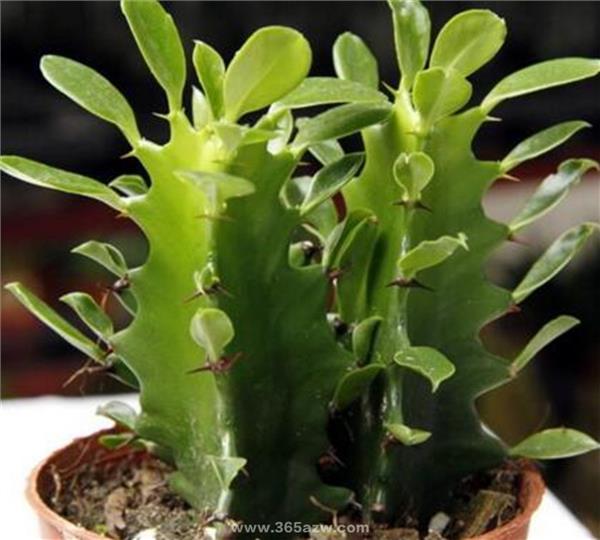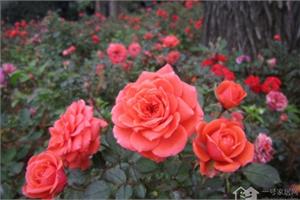How to cultivate keel in Brazil
The Brazilian keel plant is trigonous, much branched, turquoise, 4 m to 5 m high, with small spines on the edges, very short. Keel column summer white flowers, 4 to 9, clustered on the upper thorn seat, day open and night closed (potted plants are generally not easy to bloom), berries small round, blue-purple, edible. So, how to cultivate Brazilian keel?
Ecological habits of Brazilian keel
Like sufficient sunshine, not cold-resistant, but drought-resistant, like dry loam. The keel column needs plenty of sunshine, the branches are blue-green, the leaves are like fish scales, and they sparkle in the sun, with numerous bodies and sharp swords, which are spectacular and are good for potted flowers.
The north should be kept indoors in winter, and the south can be planted in the open field or used as a fence, which is not only a green barrier, but also beautifies the courtyard, and the fragrance of flowers and fruits can be seen in summer.

Garden use of Brazilian keel
1. The Brazilian keel is suitable for decoration of home and office environment, and plays a good role in beautifying the environment and purifying the air. In the north, it should be cultivated indoors in winter, and in the south, it can be planted in the open field or used as a fence, which is not only a green barrier, but also beautifies the courtyard, and the fragrance of flowers and fruits can be seen in summer.
2. Brazilian keel is known as "omnipotent rootstock". It can be grafted with tiger plum and crab claw orchid with keel column. The keel column needs plenty of sunshine, the branches are blue-green, the leaves are like fish scales, and they sparkle in the sun, with numerous bodies and sharp swords, which are spectacular and are good for potted flowers.
Conditions for keel culture in Brazil
1. Lighting
Brazilian keels love the sun very much, so plants need to be placed in sunny places to fully receive sunlight during breeding, but the summer light is very strong and will burn the leaves of plants, so they need proper shade.
2. Temperature
Brazilian keel loves a warm growing environment, so plants need to be raised indoors in winter in the north, but the cold resistance of Brazilian keel is really not very good, even if the south can be planted in the open field, in order to prevent frost damage, we should still pay attention to keep warm.

3. Watering
Brazilian keels are not drought-resistant, so daily farming requires an adequate water supply, but that doesn't mean more watering. After all, the Brazilian keel is one of the succulent plants, so it can not adapt to the situation of too much water, so watering should be controlled properly, not stagnant water.
4. Fertilization
The demand for fertilizer for Brazilian keel is not high, but basic fertilizer should be made when planting, so that some organic fertilizer should be properly added to the soil, so that suddenly there is sufficient fertility, so that you can apply a little less fertilizer at ordinary times.
5. Soil
The adaptability of Brazilian keel is very good, so the requirement for soil is not high, so we can prepare some sandy soil with less stickiness and good drainage as cultivation soil, which is beneficial for plants to breathe freely during growth.
6. Pruning
Brazilian keel is a kind of foliage plant, so some proper pruning work needs to be done in the process of breeding. Pruning is mainly to cut off the excess branches and buds of plants and mature branches and buds, and pay attention to whether the plant leaves are withered, yellow or rotten, and so on.
7. Change the basin
The Brazilian keel plant is higher, so the soil should be changed every year and the basin should be changed every two years. When changing the soil, the old soil and new soil can be mixed in half, and the rooting rate is higher.

Note: there are sharp thorns on the fleshy stem of the Brazilian keel, and the white milk in the stem is poisonous, especially not into the eye, so special attention should be paid to the proper place in the family culture to avoid stabbing and poisoning in children and the elderly. The juice of the keel is poisonous, as long as the branches and leaves are not broken, the milky juice will not flow out. If you touch it accidentally, you must wash your hands immediately and do not enter it, because someone has tried it and your mouth will go numb soon after the entrance.
Related
- Wuhan Hospital Iron Tree Blooming Result Was Instantly Frightened by the Gardener Master
- Which variety of camellia is the most fragrant and best? Which one do you like best?
- What is the small blue coat, the breeding methods and matters needing attention of the succulent plant
- Dormancy time and maintenance management of succulent plants during dormancy
- Minas succulent how to raise, Minas succulent plant pictures
- What are the varieties of winter succulent plants
- How to raise succulent plants in twelve rolls? let's take a look at some experience of breeding twelve rolls.
- Attention should be paid to water control for succulent plants during dormant period (winter and summer)
- Watering experience of twelve rolls of succulent plants
- Techniques for fertilizing succulent plants. An article will let you know how to fertilize succulent plants.



